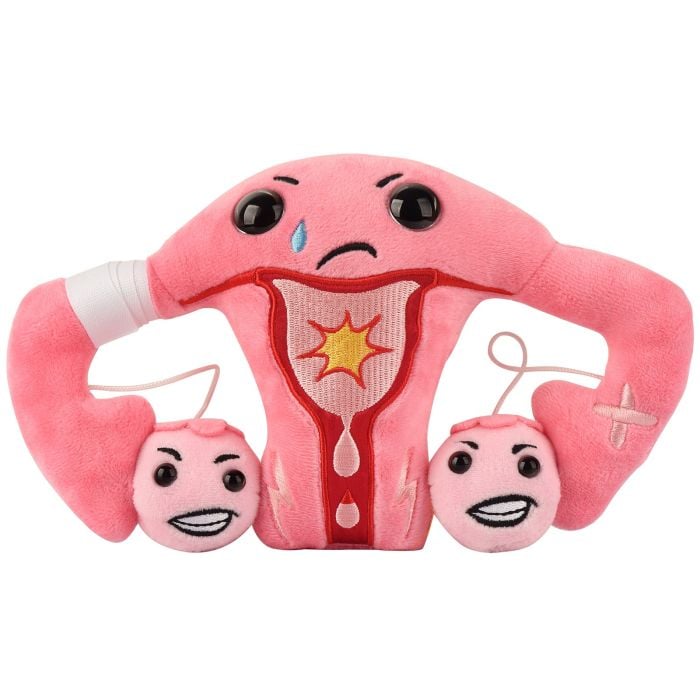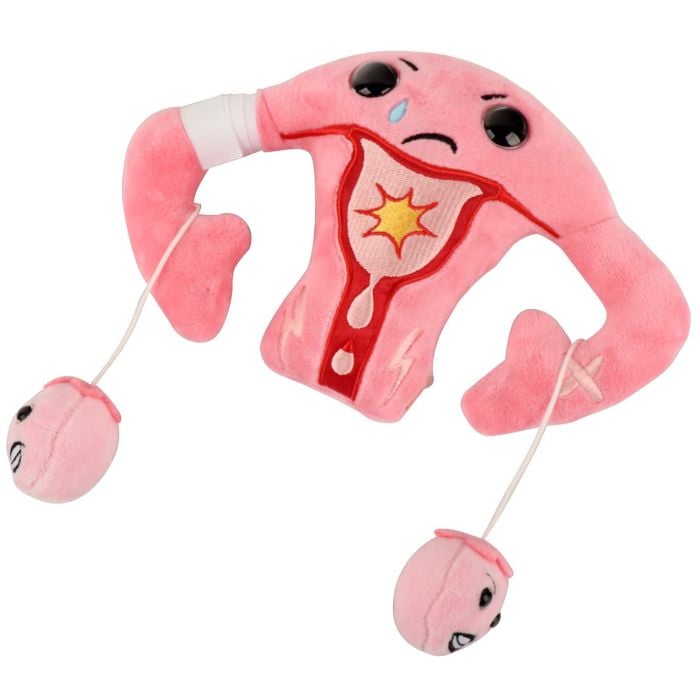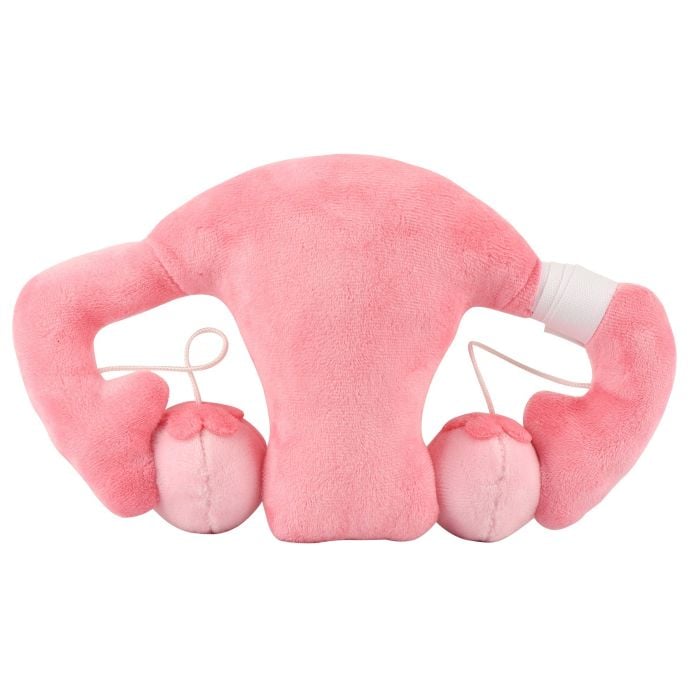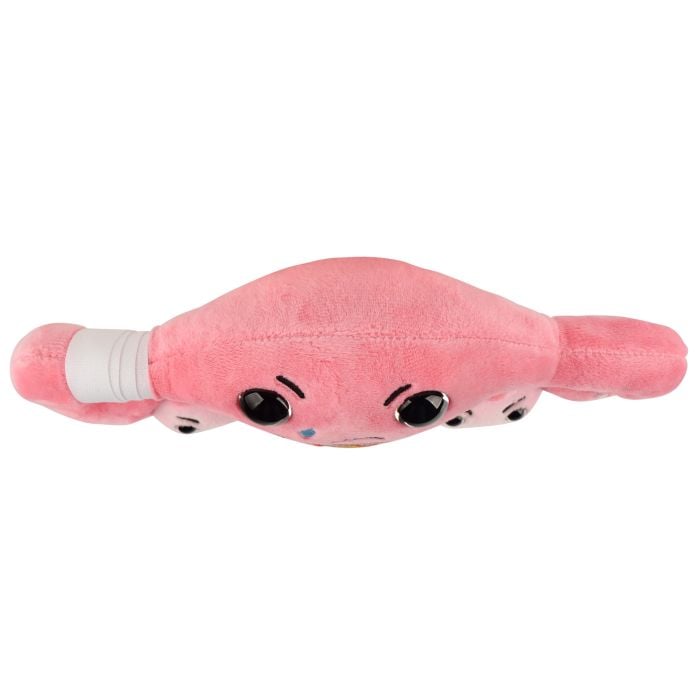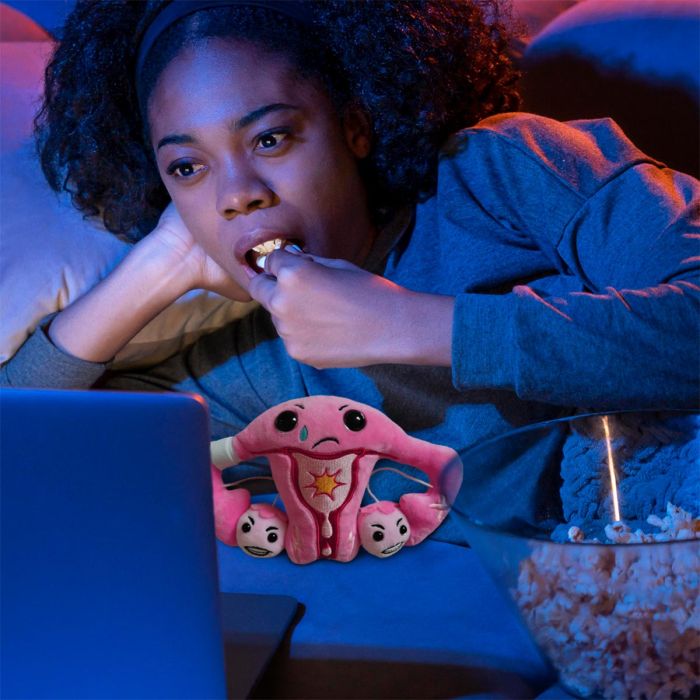PMS Uterus
The struggle is real. Say hello to PMS Uterus: a plush that captures the pain, mood swings and drama of premenstrual syndrome with fierce flair. This uterus plush features an embroidered tear, angry face, throbbing pain symbols and even a tiny bandage prop for those crampy days. Plus it includes plush egg cells that magnetically attach for an added dose of realism and fun.
Premenstrual syndrome (PMS) affects millions, causing bloating, irritability, cramps, cravings and more. This anatomically inspired plush is a funny, heartfelt and relatable gift for anyone who knows the rage and resilience of a monthly cycle. Scientifically accurate? Kind of. Emotionally accurate? Absolutely.
Whether you’re gifting to a friend, educating a class or just surviving another cycle, PMS Uterus is here to scream, cry and cuddle through it all. A bold, empowering plush for women’s health awareness, gynecological education and anyone who needs a PMS support buddy.
Product Details
Additional Information
| Sizes | Giantmicrobes are based on actual microbes, cells, organisms and other critters, only 1,000,000 times actual size! Gigantic (GG) 16-24" XL (XL) 10-15" Original (PD) 5-8" Keychain (KC) 2-4" with clip |
|---|---|
| Materials | Plush from all new materials. Stuffed with polyester fiber fill. Surface washable: sponge with water & soap, air dry. |
| Packaging | Each plush microbe includes a printed card with fun, educational and fascinating facts about the actual microbe or cell. |
| Safety | Every product meets or exceeds U.S. and European standards for safety. For ages 3 and up. |
All about PMS Uterus
FACTS: Ah, the luteal phase. That magical time when progesterone rises, patience plummets and feelings get a bit... extra. PMS, or premenstrual syndrome, refers to the physical, emotional and behavioral symptoms that occur during the luteal phase of the menstrual cycle, typically 1 to 2 weeks before menstruation. It can make a surprise appearance at any time between puberty and menopause. These symptoms are driven by the natural rise and fall of hormones (especially estrogen and progesterone) and can feel like an emotional rollercoaster.
Fluctuations in these hormones are known to influence serotonin, a key neurotransmitter that helps regulate mood, sleep and appetite. When hormone levels shift, serotonin can drop, triggering mood changes, irritability, anxiety and fatigue. Many also experience bloating, headaches, breast tenderness and intense food cravings. PMS affects a significant portion of menstruating individuals, with varying symptoms ranging in intensity from “I can deal with this” to “I’m not leaving the house today!"
Scientists are still working to fully understand why PMS affects some more severely than others. A more extreme form, known as PMDD (premenstrual dysphoric disorder), impacts a smaller percentage of people but can be significantly impairing. Reducing stress, regular exercise, a balanced diet, plenty of sleep and other lifestyle factors could help ease PMS symptoms. Individual responses to hormonal changes are complex and not fully predictable, which could be why some folks grab the period chocolate every month!
PMS is a biological reality that reflects the body’s intricate hormonal rhythm. It's a complex dance of hormones and neurotransmitters conspiring to mess with your vibe once a month. The good news? You're not imagining it. The bad news? You might still find yourself tearing up over a commercial or an empty container of ice cream. And that’s okay! While symptoms can be frustrating, they’re part of a complex and finely tuned reproductive system. Growing awareness, better research, and a wider range of treatment options are helping people manage PMS symptoms with greater understanding and support.












